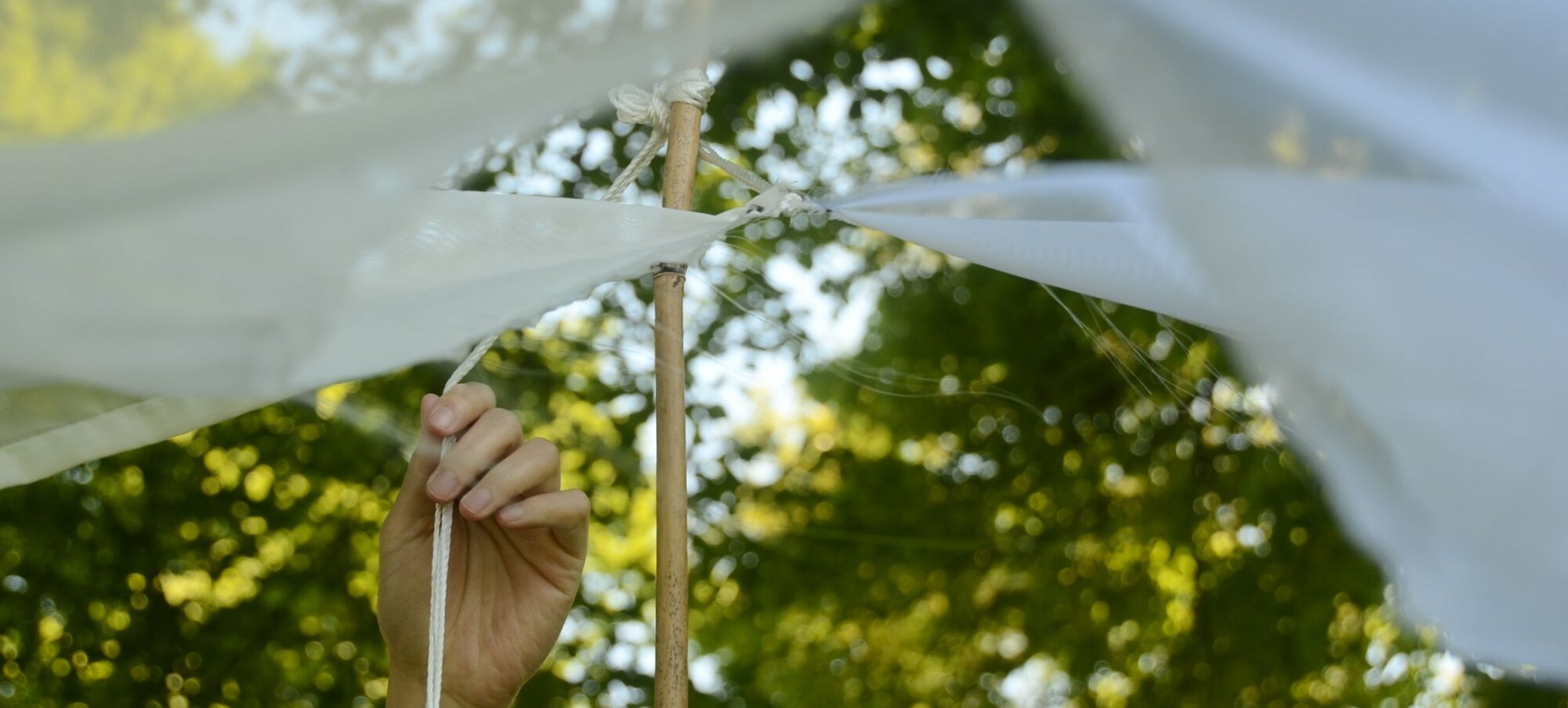Pei-Jung Lee

Festivalscape: the floating pavilion
Temporary architecture, one of the architectural languages, demonstrates innovative ideas and contemporary philosophies of architects. Its storytelling character cited my interest in how this ephemeral structure could convey the spirit and ritual of the traditional. Through the journey of theoretical research, temporary architecture contributes its continuity in two categories: festival architecture and modern interpretation of rituals. To further explore the knowledge I gained from writing my paper, the artistic research focuses on analyzing and deconstructing the theoretical conclusion by the human scale.

In festival structure, temporary architecture presents the ritualistic connection by repetitive construction and its material culture. It’s transient character develops a unique building technique without adhesives to achieve repetitive construction. By doing so, I designed a sculpture that combines personal memory and identity. By doing this repeatedly, it creates a relationship between my body and the structure. The construction process resulted in a series of lashing and binding techniques that facilitated assembly and disassembly. Through the designers' modern interpretation, temporary architecture becomes a mobile transient stage that provides a spatial experience of the ritual. Therefore, I take the Japanese tea house as a ritual example to analyze its architectural language and pattern of sequence.



As a result, I embodied the notions of architectural language and meaning in my interpretation of a mobile floating pavilion to express the spirit of tradition: the ephemerality of existence and the significance of the present moment.
We only meet at this moment, in this place. Once in a lifetime
This page was last updated on June 13, 2021